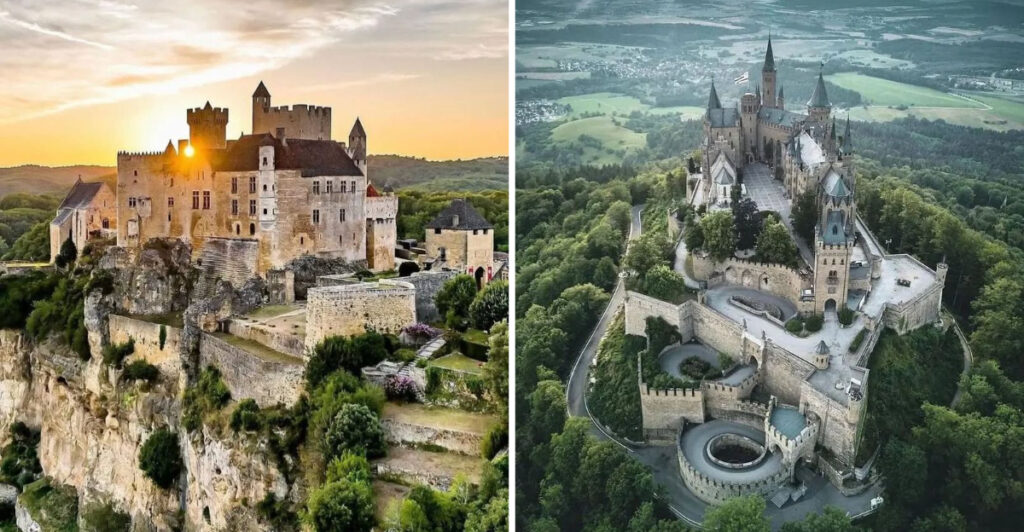Medieval castles stand as magnificent reminders of our past, blending architectural brilliance with dramatic history. These stone sentinels once protected kingdoms and housed royalty, while today they captivate our imagination with tales of knights, sieges, and royal intrigue. From clifftop fortresses to island strongholds, these 26 castles represent the most awe-inspiring medieval structures still standing.
1. Edinburgh Castle: Scotland’s Crown Jewel
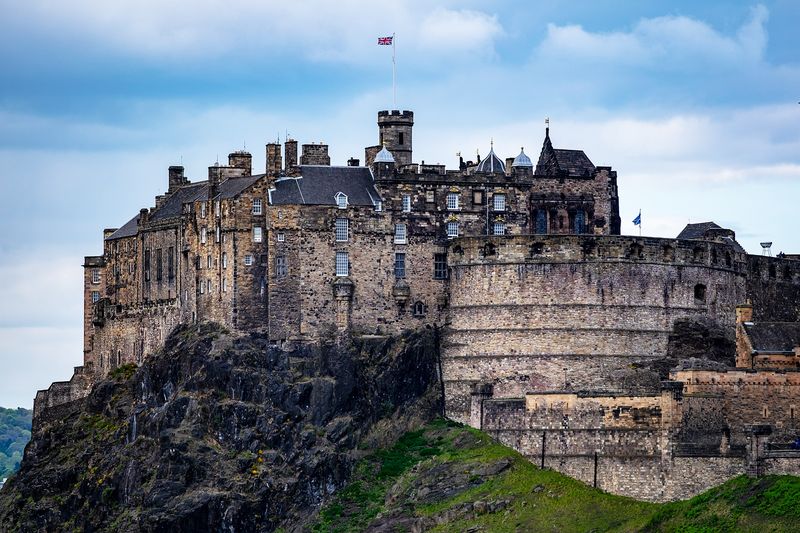
Perched atop an extinct volcano, Edinburgh Castle dominates Scotland’s capital skyline with fierce majesty. Its ancient walls have witnessed 26 sieges, earning it the title of “most besieged place in Britain.”
The castle’s Great Hall, built in 1511 for King James IV, remains a masterpiece of medieval craftsmanship with its hammerbeam roof. Visitors can marvel at the Scottish Crown Jewels and the Stone of Destiny, used in coronation ceremonies for centuries.
Even the castle’s cannons tell stories—especially Mons Meg, a 15th-century siege gun capable of firing 330-pound stones over two miles!
2. Mont Saint-Michel: France’s Tidal Marvel

Rising dramatically from swirling tides, Mont Saint-Michel seems more vision than reality. This island abbey-fortress transforms twice daily as waters recede to reveal pilgrim paths, then return to isolate the mount in mystical splendor.
Benedictine monks began construction in 708 CE after the Archangel Michael reportedly appeared to Bishop Aubert. Medieval engineers created a marvel that climbs skyward—village shops at the base, noble homes above, then monastic buildings, crowned by the abbey church piercing the clouds.
During the Hundred Years’ War, Mont Saint-Michel’s natural moat and fortifications kept it unconquered by English forces.
3. Malbork Castle: Poland’s Brick Behemoth
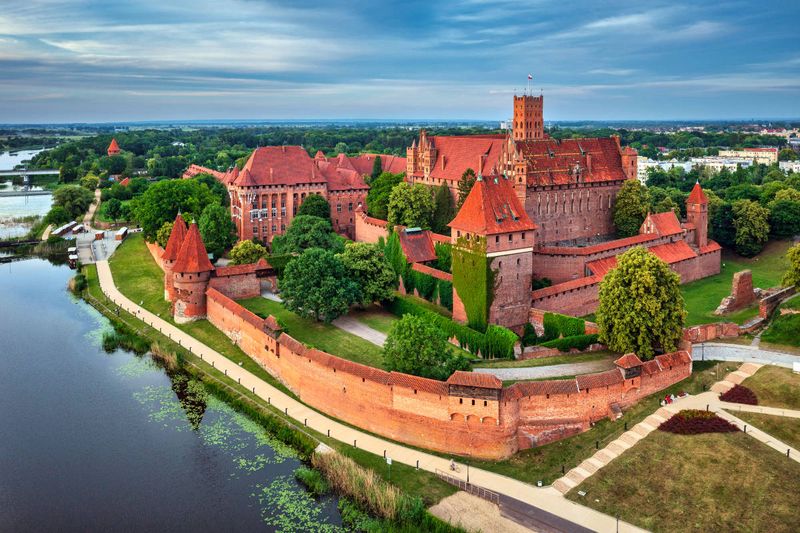
Malbork Castle overwhelms visitors with its sheer mass—the world’s largest brick castle covers 52 acres of imposing Gothic architecture. Founded in 1274 by Teutonic Knights, this fortress-monastery complex served as their headquarters during their conquest of pagan territories.
Three distinct sections—High, Middle, and Lower castles—create a masterclass in medieval defensive design. The innovative central heating system channeled hot air through floor ducts, keeping knights comfortable during harsh Baltic winters.
Though severely damaged in World War II, painstaking restoration returned Malbork to glory. Its amber museum showcases the Baltic gold that helped fund its construction.
4. Alcázar of Segovia: Spain’s Fairy-Tale Fortress
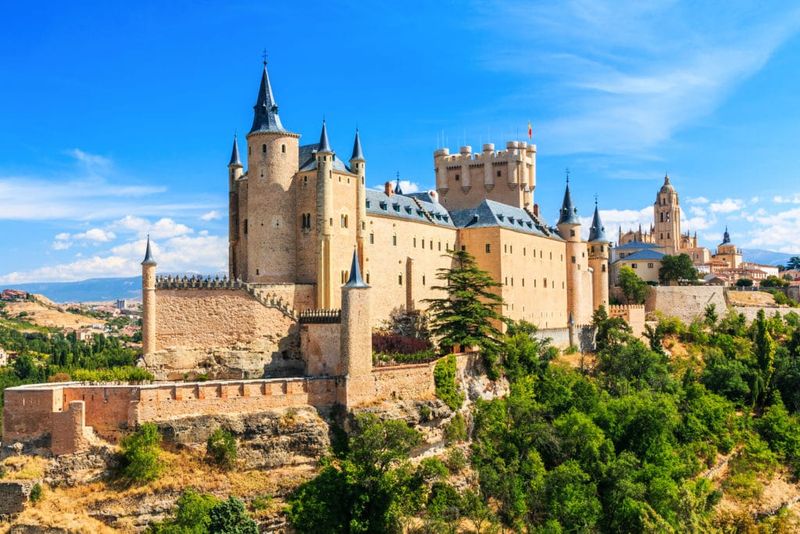
Rising from a rocky crag like the bow of a stone ship, the Alcázar of Segovia captures imaginations with its fantastical silhouette. Its distinctive tower spires reportedly inspired Walt Disney’s Cinderella Castle.
Originally a Roman fort, the structure evolved through centuries of Moorish and Christian rule. Queen Isabella I was crowned here in 1474, launching Spain’s golden age. The castle’s interior dazzles with intricately decorated ceilings and the Hall of Kings featuring sculptures of 52 Spanish monarchs.
The castle survived a devastating fire in 1862, when cadets from the military academy it housed bravely rescued many treasures before flames consumed the roof.
5. Spis Castle: Slovakia’s Hilltop Giant
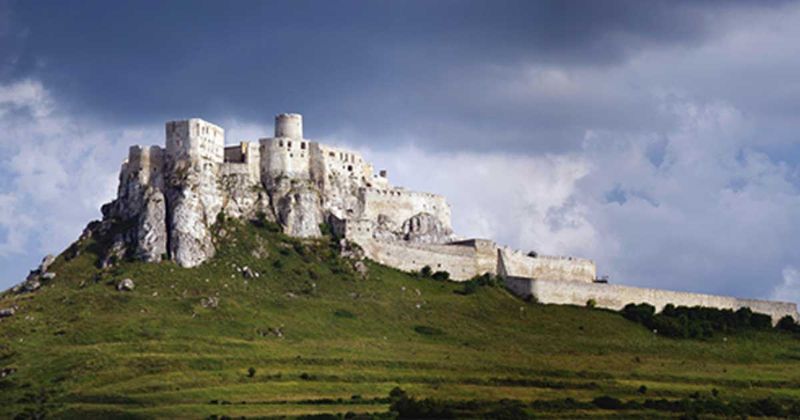
Sprawling across a limestone hill, Spis Castle commands attention with ruins covering over 10 acres—one of Central Europe’s largest castle complexes. Built in the 12th century to guard important trade routes, its massive walls once sheltered Hungarian nobles from Tatar invasions.
The castle’s ingenious water collection system channeled rainfall through stone gutters into massive cisterns. Visitors can still see the remains of the torture chamber and dungeon, grim reminders of medieval justice.
Hollywood discovered Spis Castle’s dramatic presence, featuring it in films like Dragonheart. Its weathered limestone walls glow golden at sunset, creating an otherworldly atmosphere that transports visitors centuries back in time.
6. Conwy Castle: Wales’ Magnificent Fortress
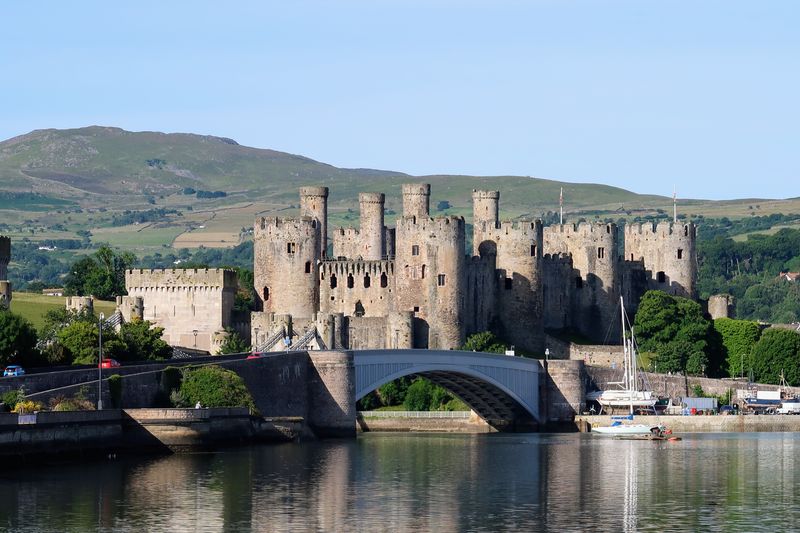
Conwy Castle emerges from Welsh bedrock as if carved by giants, its eight massive drum towers creating one of Britain’s most formidable medieval silhouettes. Built in just four years (1283-1287) by Edward I during his conquest of Wales, this masterpiece of military architecture showcases the genius of Master James of St. George.
The castle formed part of an innovative defensive system including town walls that still stand largely intact today. Its strategic position controlling the River Conwy estuary made it a critical link in Edward’s “iron ring” of fortresses.
Remarkably well-preserved arrow loops, murder holes, and drawbridge pits reveal the deadly serious purpose behind Conwy’s imposing beauty.
7. Hohenzollern Castle: Germany’s Mountaintop Dream

Floating among clouds 855 feet above the countryside, Hohenzollern Castle embodies romantic medieval revivalism at its finest. Though today’s castle dates from the 19th century, it’s the third fortress to crown Mount Hohenzollern since the 11th century.
As ancestral seat of the Hohenzollern dynasty, who produced kings of Prussia and German emperors, the castle blends military practicality with royal splendor. Its neo-Gothic towers pierce the sky while 140 rooms include treasures like Frederick the Great’s personal effects and a solid gold crown studded with diamonds.
Hidden beneath the castle, a secret passageway system allowed defenders to appear suddenly behind attackers—a medieval surprise attack system.
8. Krujë Castle: Albania’s Symbol of Resistance
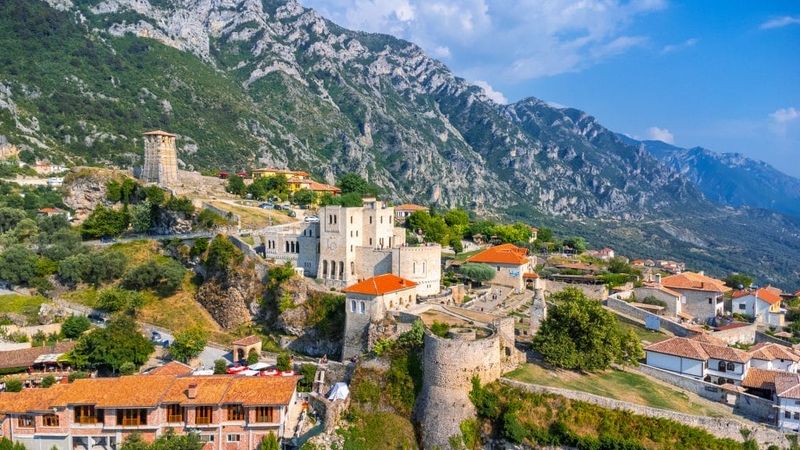
Clinging to a dramatic mountainside, Krujë Castle embodies Albanian defiance through its rough-hewn walls and commanding views. National hero Skanderbeg made this fortress his headquarters during the 15th-century resistance against Ottoman expansion, successfully repelling thirteen major assaults.
Unlike more ornate European castles, Krujë’s strength lies in its perfect integration with the rugged landscape. Natural cliffs form part of its defenses, while the castle’s irregular shape follows the mountain contours.
The castle now houses the Skanderbeg Museum, where visitors can see the hero’s legendary goat-head helmet and sword. Below the fortress walls, a 400-year-old Ottoman bazaar still bustles with merchants selling traditional crafts.
9. Gravensteen Castle: Belgium’s Dark Humor Fortress

Rising from Ghent’s urban center, Gravensteen Castle’s intimidating stone walls and moat once projected the Count of Flanders’ power over potentially rebellious citizens. Built in 1180 by Count Philip of Alsace after his return from the Crusades, its architecture reflects Middle Eastern castle designs he encountered.
The castle’s name—literally “Castle of the Counts”—belies its grim interior, which houses an impressive collection of torture devices. The uniquely Belgian twist? Today’s audio tour is narrated by a local comedian, balancing historical gravity with surprising humor.
Gravensteen witnessed a real-life Game of Thrones when angry citizens imprisoned their count here in 1301, an early example of people standing up to feudal power.
10. Eilean Donan Castle: Scotland’s Iconic Island Fortress
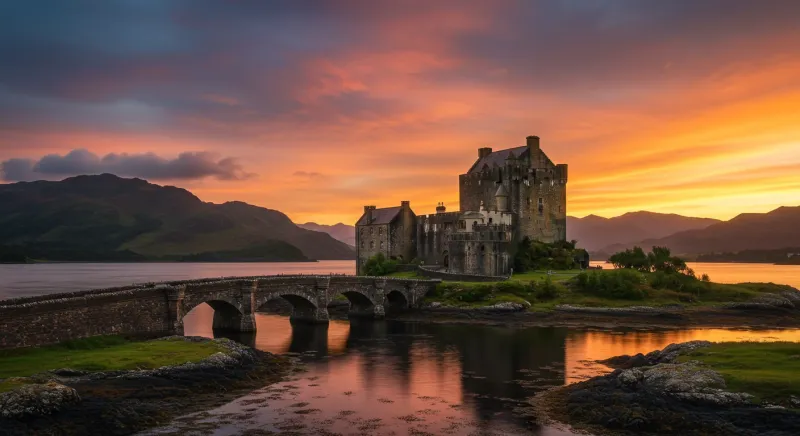
Where three sea lochs meet in the Scottish Highlands stands perhaps the most photographed castle in Scotland—Eilean Donan. This small tidal island fortress creates a perfect harmony between human architecture and wild nature that has made it a film star, appearing in everything from James Bond to Highlander.
Founded in the 13th century to protect against Viking raids, the castle was destroyed in 1719 during Jacobite uprisings. The current structure is largely a 20th-century reconstruction completed in 1932 by Lieutenant Colonel John MacRae-Gilstrap.
Stone bridges now replace the original boat access, but the castle’s remote beauty remains unchanged—especially at sunset when its reflection shimmers in the surrounding waters.
11. Corvin Castle: Romania’s Gothic Masterpiece
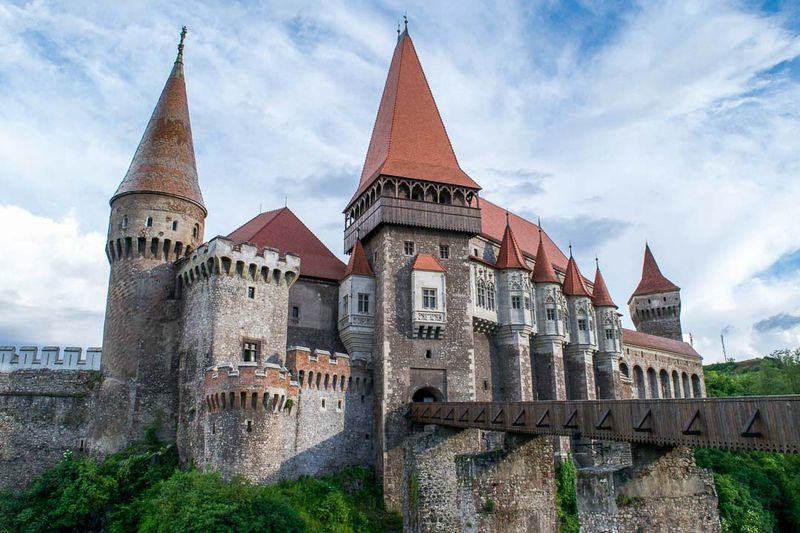
Transylvania’s most imposing castle rises on a rock above the Zlaști River, its stone towers and bastions creating a perfect Gothic silhouette. Built in 1446 by John Hunyadi (Iancu de Hunedoara), the castle blends military might with surprising Renaissance elegance.
Legend claims that Vlad the Impaler (the historical inspiration for Dracula) was imprisoned in the castle’s dungeons for seven years. While historically questionable, the tale adds to the castle’s mystique. The Knights’ Hall features massive marble columns, while the Diet Hall hosted Transylvanian nobles’ assemblies.
Particularly impressive is the castle’s 100-foot well, reportedly dug by Turkish prisoners promised freedom upon completion—a promise allegedly broken.
12. Bojnice Castle: Slovakia’s Fairytale Vision
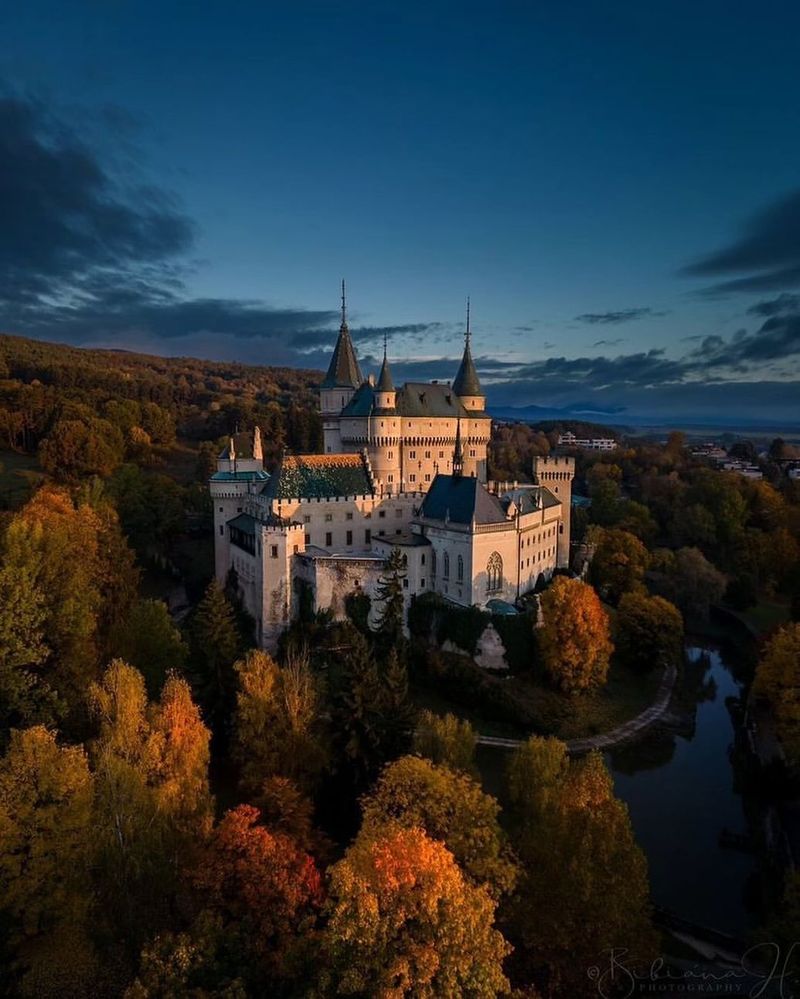
Bojnice Castle seems plucked from a children’s storybook with its conical spires, romantic turrets, and gleaming white walls. Though founded in the 12th century, today’s castle largely reflects its 1889-1910 Neo-Gothic transformation by Count János Ferenc Pálffy, who modeled it after French Loire Valley châteaux.
The castle’s 700-year-old lime tree supposedly grows from a stick planted by a legendary Hungarian king. Inside, visitors discover Slovakia’s oldest preserved medieval altar and the Golden Hall with its coffered ceiling adorned with climbing gold roses.
Modern visitors might recognize Bojnice from fantasy films or the International Ghost Festival held annually within its walls—Slovakia’s spookiest cultural event.
13. Serravalle Castle: Italy’s Hidden Sardinian Treasure
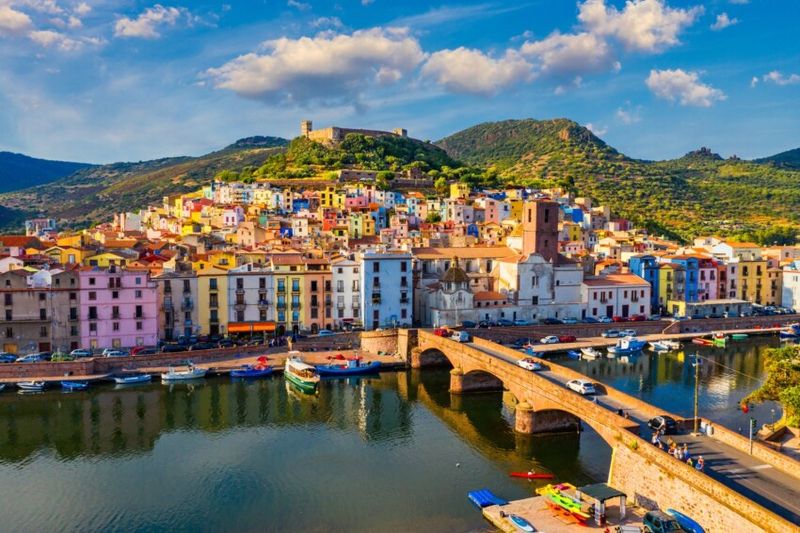
Overlooking the colorful riverside town of Bosa, Serravalle Castle’s honey-colored walls blend Sardinian, Spanish, and Islamic architectural influences into a uniquely Mediterranean fortress. Built in 1112 by the powerful Malaspina family, the castle controlled vital river access to inland territories.
Unlike many restored castles, Serravalle maintains a weathered authenticity that transports visitors genuinely back in time. The castle’s highlight is the Chapel of Our Lady of Regnos Altos, where 14th-century frescoes depicting saints and Biblical scenes survive in vibrant detail despite centuries of neglect.
Olive groves surround the approach path, offering shade to visitors making the steep climb—just as they did for medieval travelers seeking the castle’s protection.
14. Kalmar Castle: Sweden’s Renaissance Stronghold
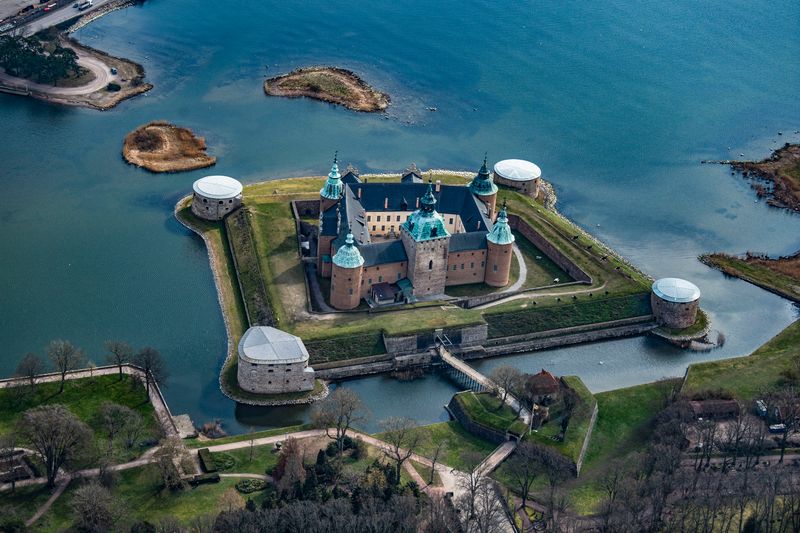
Rising from the Baltic shores, Kalmar Castle combines military strength with royal elegance through its unique square design with rounded corner towers. Initially built as a defensive tower in the 12th century, it transformed into a magnificent Renaissance palace under the Vasa dynasty.
The castle witnessed a pivotal moment in Scandinavian history when the 1397 Kalmar Union united Denmark, Norway, and Sweden under a single monarch. Its Golden Hall features an ornate ceiling where 100 roses symbolize secrecy during political discussions—an early “what happens in Kalmar stays in Kalmar” concept.
Remarkably well-preserved 16th-century interior decorations include intricate inlaid floors and painted ceilings rarely found in northern European castles.
15. Trakoscan Castle: Croatia’s Romantic Reflection
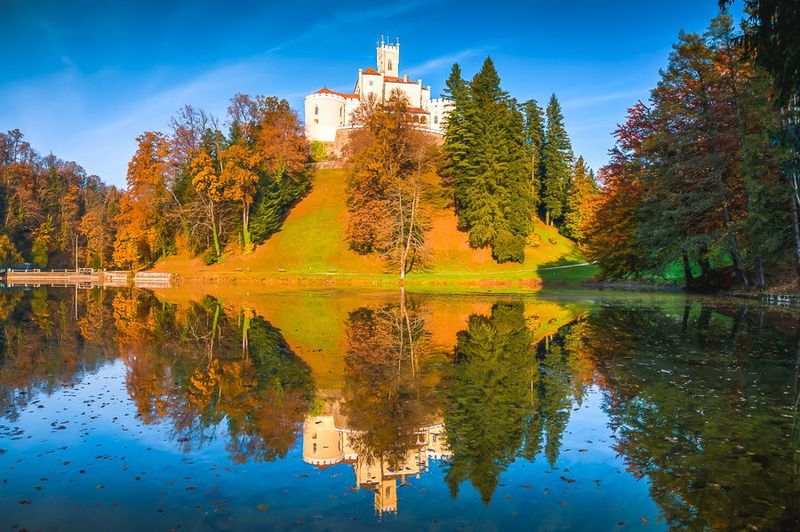
Mirrored perfectly in its emerald lake, Trakoscan Castle creates Croatia’s most romantic medieval tableau. Originally a small 13th-century observation fortress, it evolved through centuries into a neo-Gothic residence surrounded by a carefully designed landscape park.
The Drašković family owned the castle for over 400 years, filling it with portraits, furniture, and weapons that remain on display today. Visitors can explore four floors of perfectly preserved rooms, including the Knights’ Hall with its impressive weapons collection and the Music Salon where countesses once entertained guests.
The surrounding forest hides hiking trails leading to secret viewpoints of the castle—perfect spots where painters have captured its fairy-tale silhouette for centuries.
16. Himeji Castle: Japan’s White Heron Masterpiece
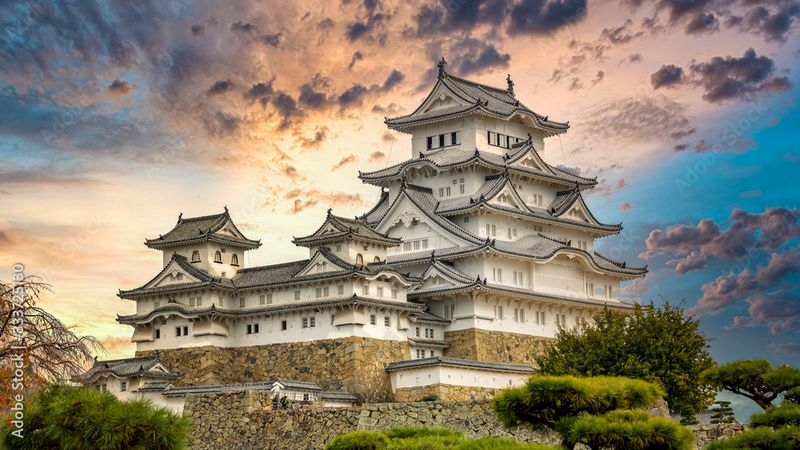
Rising six stories from cherry blossom gardens, Himeji Castle exemplifies Japanese medieval fortress design with its brilliant white plastered walls. Nicknamed “White Heron Castle” for its graceful silhouette resembling a bird taking flight, this 17th-century complex survived centuries of warfare, earthquakes, and even World War II bombing raids that destroyed surrounding areas.
The castle’s defensive brilliance lies in its confusing maze of paths, gates, and dead ends designed to trap attacking forces. Hidden defensive features include “stone-dropping windows” where defenders could rain projectiles on enemies below.
Unlike European castles built with thick walls, Himeji demonstrates Japan’s different approach—multiple baileys with precisely angled watchtowers allowing defenders to attack from multiple directions simultaneously.
17. Jaisalmer Fort: India’s Living Desert Citadel
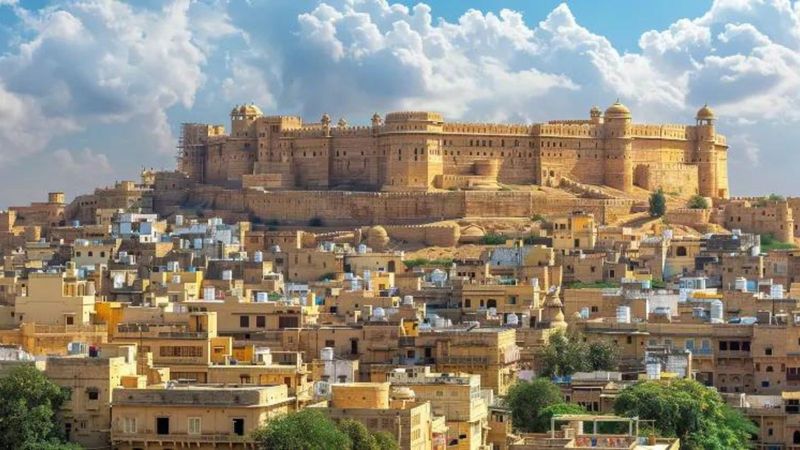
Rising from the Thar Desert like a massive sandcastle, Jaisalmer Fort glows golden in the setting sun—earning its nickname “Sonar Qila” (Golden Fort). Unlike most castles that became museums, this 12th-century marvel remains a living community where approximately 4,000 people reside within its massive walls.
Built in 1156 by Rawal Jaisal, the fort’s 99 bastions create a formidable perimeter around ornate Rajput palaces and temples. Intricately carved balconies and window frames showcase the region’s exceptional sandstone craftsmanship.
The fort’s ingenious water conservation system collected precious rainfall through a network of channels feeding public tanks—vital technology in the arid Rajasthan climate where water meant survival.
18. Citadel of Qaitbay: Egypt’s Mediterranean Guardian

Standing proudly on Alexandria’s eastern harbor, the Citadel of Qaitbay occupies the exact site where one of the Seven Wonders of the Ancient World once stood—the legendary Lighthouse of Alexandria. Sultan Qaitbay built this fortress in 1477 using stones from the collapsed lighthouse, creating a literal foundation of ancient wonder beneath medieval military innovation.
The castle’s distinctive Ottoman-influenced architecture features round towers and decorative elements rarely seen in European fortifications. Its strategic position guarded Egypt’s Mediterranean coast for centuries against potential Crusader attacks.
Inside, a maze of passages leads to chambers once filled with Mamluk warriors, while the roof offers breathtaking panoramic views of the same waters once navigated by Cleopatra’s royal barges.
19. Palace of the Grand Master: Rhodes’ Crusader Command
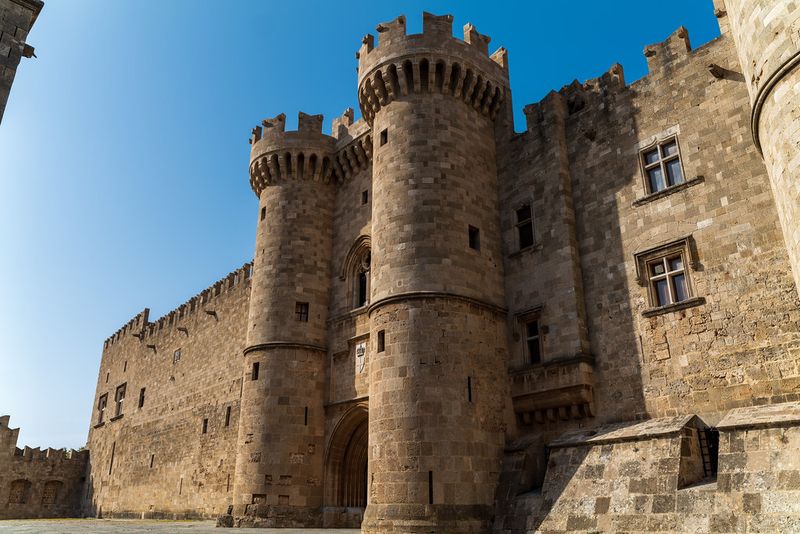
Standing at the highest point of Rhodes’ medieval city, the Palace of the Grand Master combines military might with Gothic grandeur. Built in the 14th century by the Knights Hospitaller, this massive structure served as headquarters for the Christian military order that controlled Rhodes for over two centuries.
Massive twin towers flank the entrance, while 158 rooms inside include the Grand Reception Hall where knights once gathered beneath Gothic arches. Incredibly, much of what visitors see today was actually rebuilt in the 1930s when Italian dictator Mussolini transformed the palace into his holiday retreat.
Ancient mosaics from the island of Kos were transplanted to the palace floors, creating an unusual blend of medieval Christian and ancient pagan artistry.
20. Itchan Kala Fortress: Uzbekistan’s Silk Road Sentinel
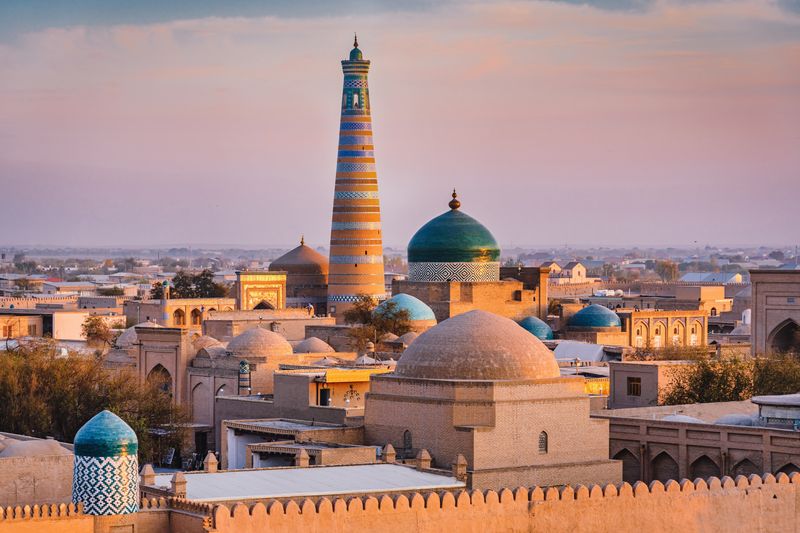
Rising from the Kyzylkum Desert, Itchan Kala’s massive clay walls enclose an entire medieval city frozen in time. This 10th-century fortress in Khiva protected Silk Road caravans with walls reaching 33 feet high and extending for over 1.5 miles around the inner city.
Unlike stone European castles, Itchan Kala demonstrates Central Asian architectural traditions with mud-brick construction, blue-tiled domes, and intricate wooden carvings. The fortress contains over 50 historic monuments including the Kalta Minor Minaret—a stunning turquoise tower that remains unfinished after its patron khan died.
The fortress witnessed countless invasions, including Genghis Khan’s devastating conquest and later resurgence as a center for Islamic scholarship, astronomy, and mathematics.
21. Windsor Castle: England’s Enduring Royal Residence
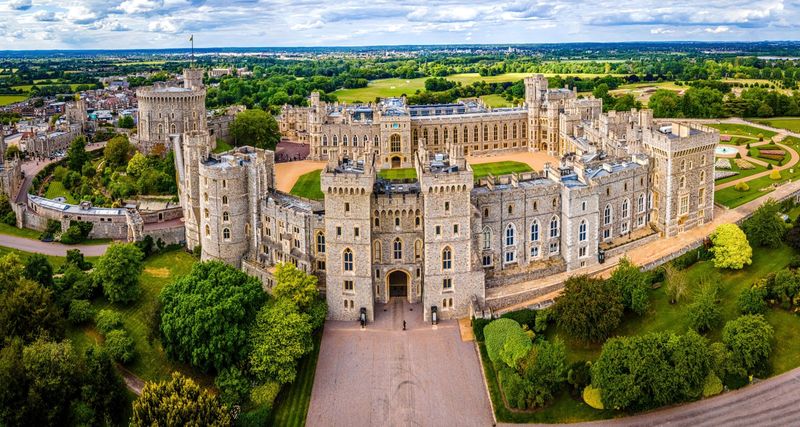
Dominating the Thames Valley for nearly a millennium, Windsor Castle stands as the world’s oldest continuously inhabited castle and the British monarchy’s spiritual home. William the Conqueror chose this strategic location in 1070, building a fortress that has since expanded into a 13-acre royal complex.
The castle survived civil wars, world wars, and even a devastating 1992 fire that destroyed 115 rooms. St. George’s Chapel houses the tombs of 10 sovereigns, including Henry VIII and Queen Elizabeth II, while the magnificent State Apartments showcase priceless artworks by Rembrandt, Rubens, and Holbein.
The iconic Round Tower, built by Henry II, contains royal archives with documents dating back to the medieval period.
22. Château de Beynac: France’s Limestone Sentinel
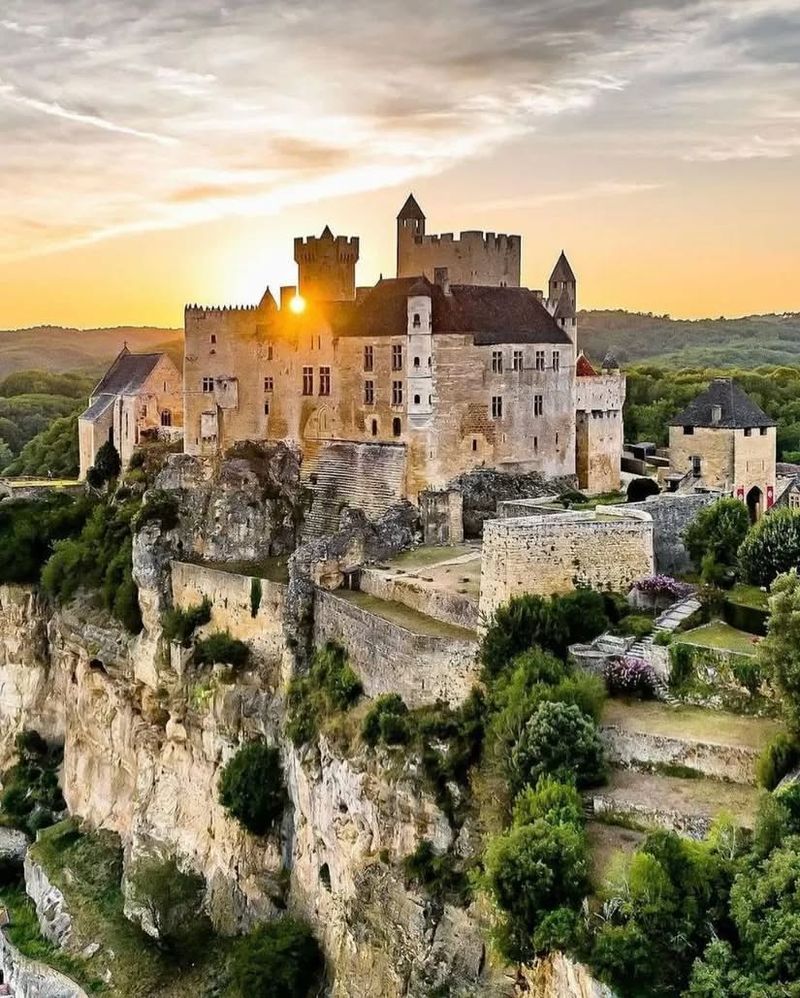
Perched 500 feet above the Dordogne River, Château de Beynac commands the landscape with austere limestone walls that have witnessed centuries of conflict. Built in the 12th century, this fortress became a flashpoint in the struggle between France and England during the Hundred Years’ War—changing hands multiple times.
Richard the Lionheart once claimed these walls, though French forces eventually secured it permanently. The castle’s stark military architecture contrasts dramatically with nearby Renaissance châteaux, emphasizing function over beauty with its double barbican, murder holes, and arrow slits.
Film directors discovered Beynac’s authentic medieval atmosphere, featuring it in movies like Luc Besson’s Joan of Arc and Ridley Scott’s The Last Duel.
23. Xativa Castle: Spain’s Twin-Peaked Fortress

Stretching across twin mountain peaks, Xativa Castle creates one of Spain’s most dramatic silhouettes. This dual fortress system evolved from ancient Iberian beginnings through Roman, Visigothic, Islamic, and Christian periods—each culture adding defensive innovations.
Hannibal reportedly stayed here while plotting campaigns against Rome, beginning the castle’s long association with military history. The fortress later gained infamy as a prison for aristocratic captives, including members of the powerful Borgia family who originated from Xativa.
After Philip V captured the city during the War of Spanish Succession, he ordered it burned and renamed “San Felipe”—a vindictive act remembered today in the town’s upside-down portrait of the king hanging in the local museum.
24. Akershus Fortress: Norway’s Harbor Protector

Guarding Oslo’s harbor since the 1290s, Akershus Fortress represents seven centuries of Norwegian military architecture in one stunning complex. King Håkon V commissioned the castle after a previous royal residence proved vulnerable to attack—creating a stronghold that successfully repelled multiple sieges throughout its history.
The fortress evolved from medieval castle to Renaissance royal residence, then to Baroque military base—each era leaving architectural marks visible today. During World War II, Nazi forces used Akershus as headquarters and execution grounds for resistance fighters, adding a somber chapter to its long history.
Now the castle serves as Norway’s ceremonial center, housing the Royal Mausoleum where modern monarchs rest alongside medieval predecessors—bridging centuries of Norwegian history.
25. Bran Castle: Romania’s Mythic Mountain Pass
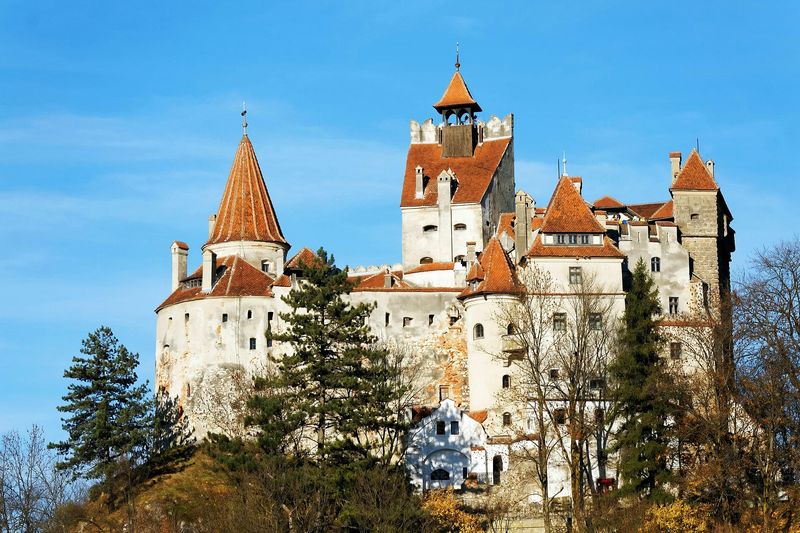
Commanding a strategic mountain pass between Transylvania and Wallachia, Bran Castle pierces the sky with dramatic stone towers and red-tiled roofs. Though popularly associated with Dracula, Vlad the Impaler’s connections to the castle were minimal—a marketing myth that obscures the fortress’s actual fascinating history.
Built in 1377 to collect tolls from merchants crossing the Carpathians, the castle later became a favorite residence of Romania’s beloved Queen Marie. Her artistic sensibilities transformed harsh medieval interiors into comfortable royal apartments filled with Romanian folk art.
The castle’s secret passage—a narrow staircase carved into the mountain rock—allowed defenders to come and go during sieges, bringing supplies to the otherwise isolated fortress.
26. Eltz Castle: Germany’s Enchanted Valley Treasure
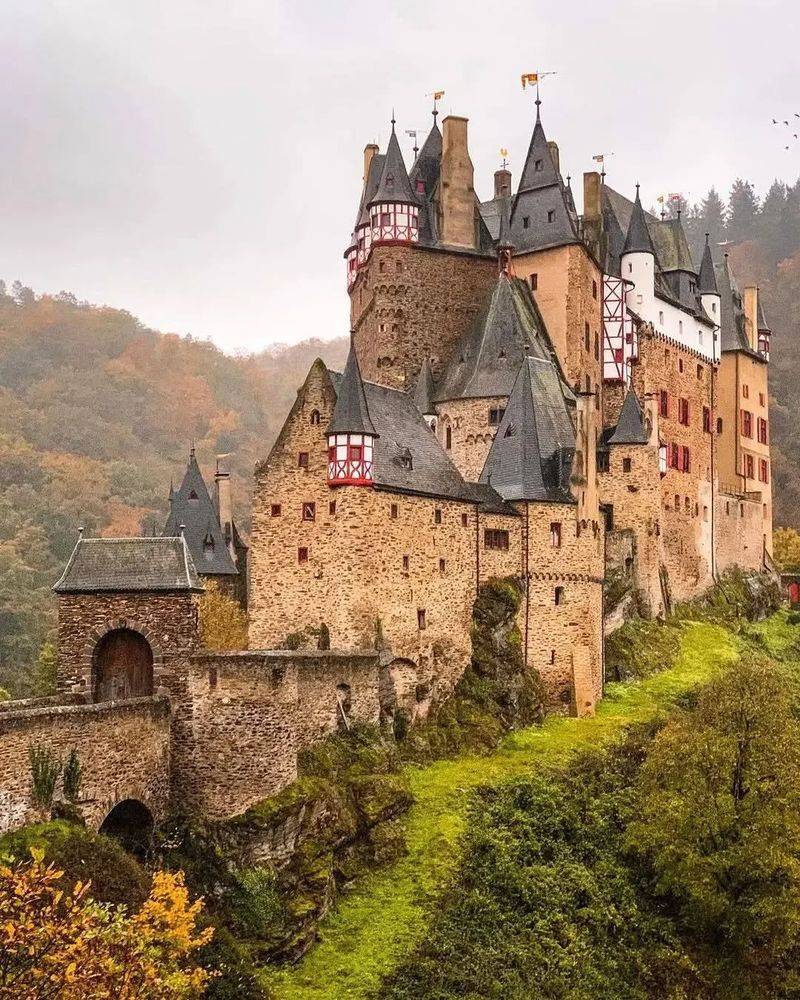
Nestled in a lush valley rather than perched on a defensive height, Eltz Castle breaks conventional medieval fortress rules with magical results. Surrounded on three sides by the Elzbach River, this fairytale structure has remained in the same family for 33 generations—over 850 years of unbroken ownership.
Unlike most German castles, Eltz survived the Thirty Years’ War, peasant rebellions, and both World Wars completely intact. Eight residential towers housed different branches of the Eltz family who shared the castle through a unique condominium-style arrangement centuries before the concept existed elsewhere.
The Treasury displays medieval goldsmith masterpieces, while the armory contains ornate weapons never used in battle—symbols of status rather than tools of war.

